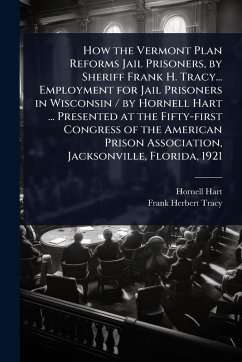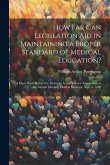This volume contains two presentations delivered at the Fifty-first Congress of the American Prison Association in Jacksonville, Florida, 1921. The first, "How the Vermont Plan Reforms Jail Prisoners," is by Sheriff Frank H. Tracy and details the Vermont Plan's approach to reforming incarcerated individuals. The second, "Employment for Jail Prisoners in Wisconsin," is by Hornell Hart. Both presentations offer insights into early 20th-century perspectives on prison reform, focusing on rehabilitation through employment and structured programs. This work provides valuable historical context for understanding the evolution of criminal justice and penal systems in the United States and is of interest to scholars and practitioners in criminology, law, and social policy. This work has been selected by scholars as being culturally important, and is part of the knowledge base of civilization as we know it. This work was reproduced from the original artifact, and remains as true to the original work as possible. Therefore, you will see the original copyright references, library stamps (as most of these works have been housed in our most important libraries around the world), and other notations in the work. This work is in the public domain in the United States of America, and possibly other nations. Within the United States, you may freely copy and distribute this work, as no entity (individual or corporate) has a copyright on the body of the work. As a reproduction of a historical artifact, this work may contain missing or blurred pages, poor pictures, errant marks, etc. Scholars believe, and we concur, that this work is important enough to be preserved, reproduced, and made generally available to the public. We appreciate your support of the preservation process, and thank you for being an important part of keeping this knowledge alive and relevant.
Bitte wählen Sie Ihr Anliegen aus.
Rechnungen
Retourenschein anfordern
Bestellstatus
Storno





![Public Laws and Resolutions Passed by the General Assembly at Its Session of ... [serial]; 1921 extra session Public Laws and Resolutions Passed by the General Assembly at Its Session of ... [serial]; 1921 extra session](https://bilder.buecher.de/produkte/65/65531/65531026m.jpg)


![Public Addresses Presented to the Hon. J.R. Gowan [microform]: With Gleanings From the Press Touching His Career Public Addresses Presented to the Hon. J.R. Gowan [microform]: With Gleanings From the Press Touching His Career](https://bilder.buecher.de/produkte/66/66126/66126885m.jpg)